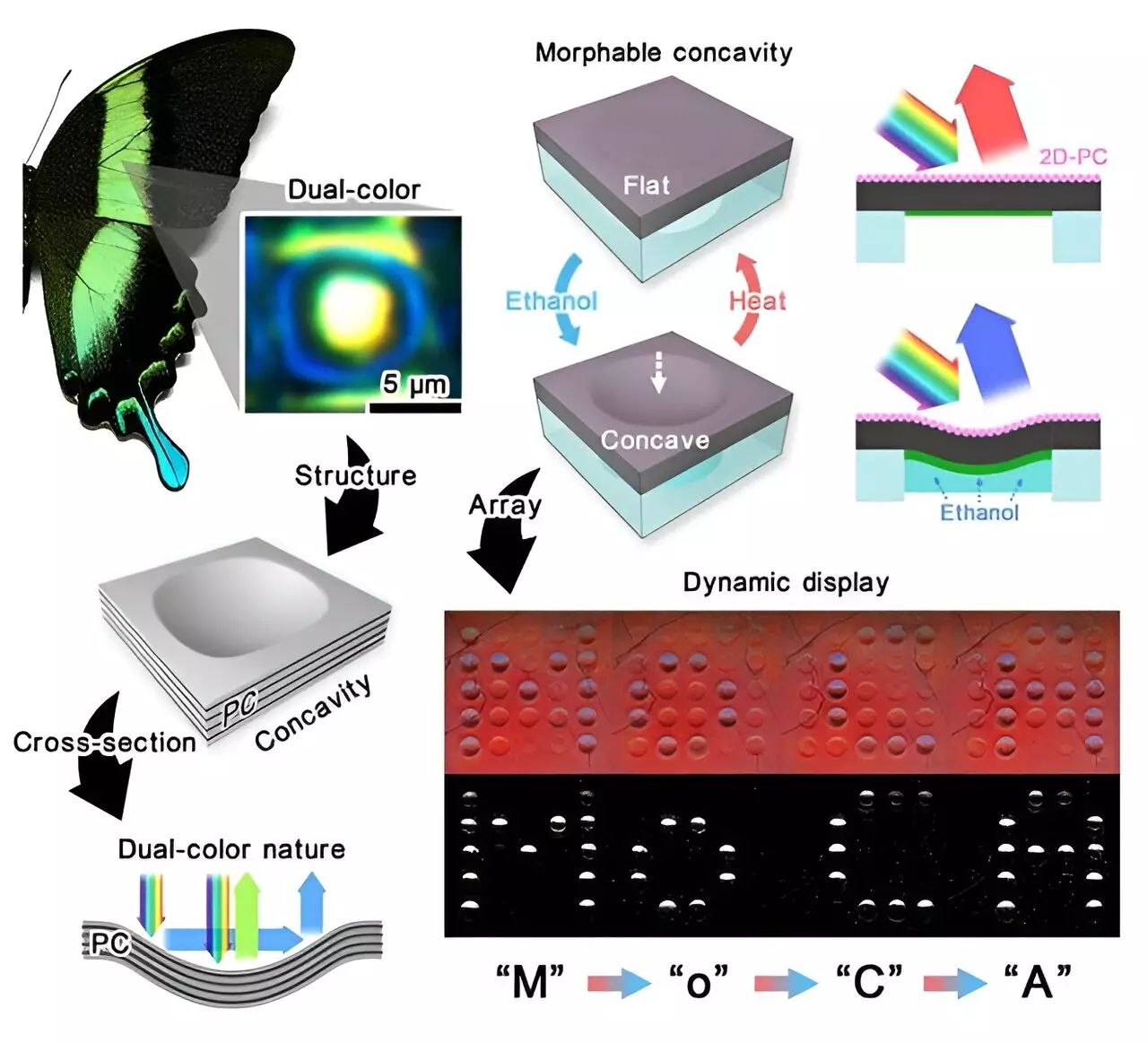Researchers at the University of Hong Kong (HKU) have made a groundbreaking discovery in the field of color-changing systems. They have successfully designed and developed a pixelated, soft system called a Morphable Concavity Array (MoCA). This innovative technology has the ability to change color by manipulating light, making it an incredibly versatile tool with applications across various industries. From medical bandages that can detect infection to foldable screens on smartphones and tablets, and even wearable technology with integrated sensors, the potential uses for MoCA are vast and exciting.
Understanding the Composition of MoCA
MoCA, developed by HKU researchers, is a thin rubber-like structure with a thickness equivalent to just three human hairs. It consists of two layers – a photonic crystal elastomer actuator (PC-EA) film on top and a hole array at the bottom. The PC-EA film itself is made up of two layers – an elastomer layer on top and a hydrogel layer below. By adding ethanol to the hydrogel layer, it swells, causing the elastomer layer to be pulled downward into the holes in the array. This creates a concave shape, known as morphable concavity (MoC), which acts as a pixel. The formation of the concave shape blocks red light and causes the pixel’s visible color to change from red to blue. This revolutionary design was inspired by the dual-color micro-concavities present on butterfly wings, which create vibrant iridescent colors.
One of the key differentiators of MoCA is its ability to change color by altering its local morphology, specifically by transitioning between “flat” and “concave” states. This sets MoCA apart from other pixelated color-changing systems currently available. Another notable breakthrough is the individual manipulation of color changes in pixels. Each pixel in MoCA is connected to an individual “piping system” through which ethanol is delivered. This multi-channel microfluidics approach allows for precise control and manipulation of the color changes. Unlike conventional electrochromic methods, MoCA offers a complementary approach to achieve desired color variations.
MoCA holds great potential in the field of counterfeiting. For example, it can be used to conceal patterns or QR codes in clothing that are only visible under specific conditions, providing a secure anti-counterfeit measure. However, the long-term vision of the HKU team goes beyond counterfeiting applications. They aim to leverage the principles behind MoCA, namely soft matter and microfluidics, to develop optical devices that mimic and surpass the capabilities of compound eyes found in insects. Compound eyes offer advantages such as a wider field of vision and the ability to focus on multiple objects simultaneously. With MoCA’s ability to change shape from flat to concave, it can potentially create multiple lenses that can change focus individually. This technology embodies the concept of compound eyes in a way that surpasses nature, combining the advantages of both compound eyes and crystalline lenses found in human eyes.
The Future of Optical Devices
By integrating compound eye-like structures and the focusing ability of crystalline lenses, optical devices could be developed that not only imitate nature but also surpass its limitations. Professor Shum, co-director of the research team, explains that the deformation of the crystalline lens in the human eye allows us to focus on different distances. Leveraging MoCA’s technology, individual units can be deformed to create multiple lenses with different focusing abilities. This would result in optical devices with enhanced focusing ability, higher resolution, and improved color perception. The potential for these revolutionary optical devices is vast and could shape the future of various fields such as imaging technology, microscopy, and beyond.
The groundbreaking research conducted by the University of Hong Kong’s team has resulted in the development of MoCA, an innovative pixelated, soft, color-changing system. This technology has tremendous potential across industries, from medical applications to consumer electronics and beyond. MoCA’s unique ability to change color by manipulating its local morphology, as well as its individual pixel manipulation capabilities, sets it apart from existing color-changing systems. Furthermore, the team’s long-term vision to develop optical devices that combine the advantages of compound eyes and crystalline lenses could have far-reaching implications for various fields. The future holds exciting possibilities as MoCA paves the way for advancements in color-changing technology and optical devices that exceed the limitations of nature.



Leave a Reply